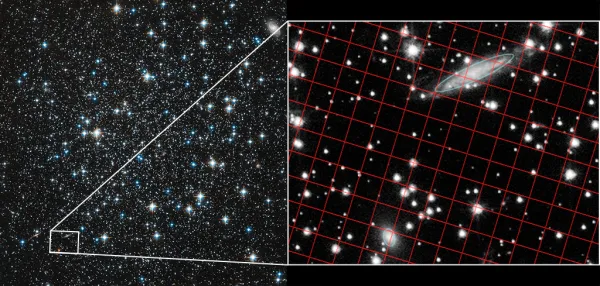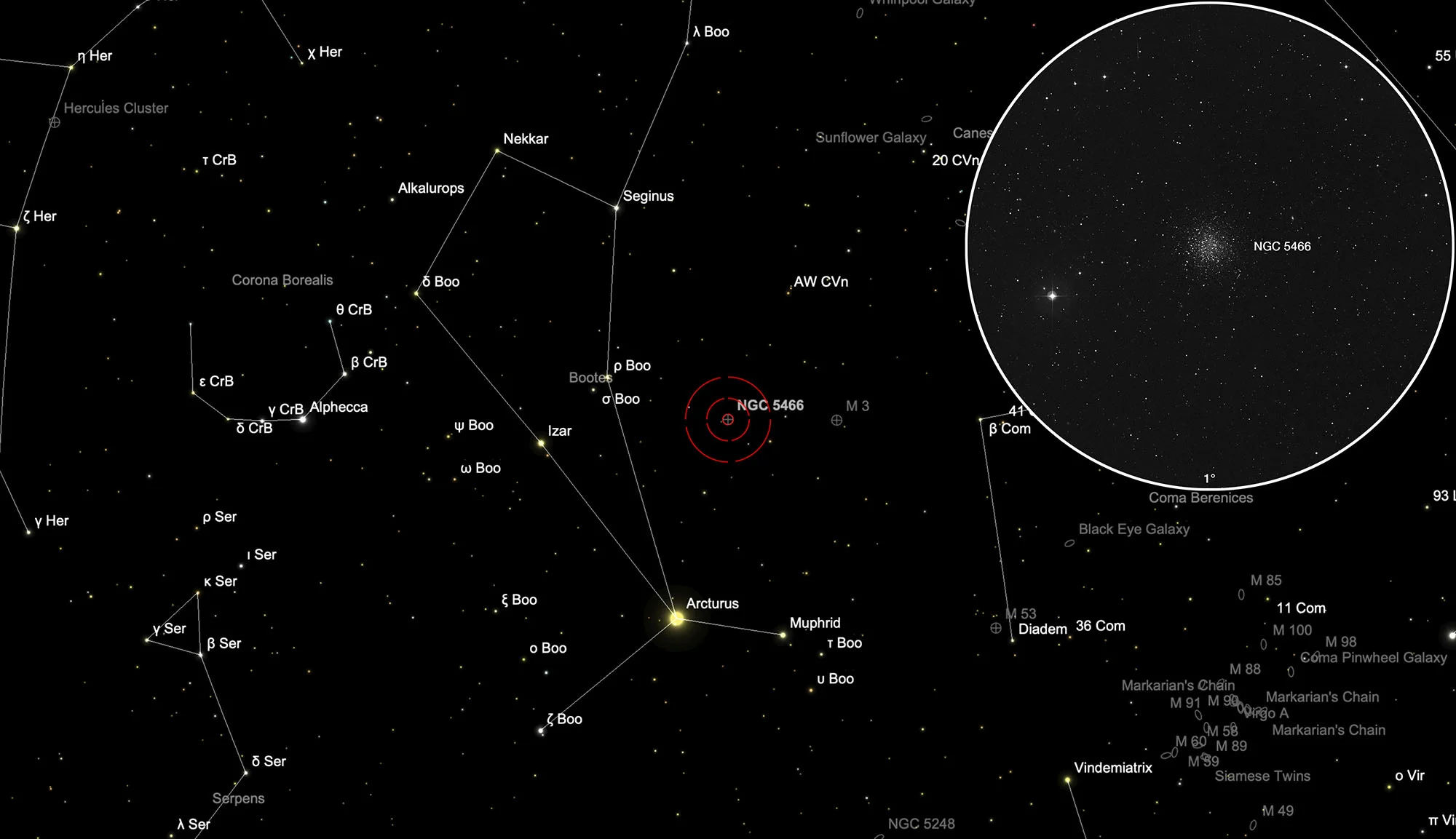Globular Cluster NGC 5466

Object Description
The globular cluster NGC 5466 was discovered on 17 May 1784 by the German-British astronomer William Herschel. It is a loose globular cluster of concentration class XII. [196]
Like most globular clusters, NGC 5466 consists of very metal-poor stars, indicating a very high age, estimated at 12.88 billion years. Incidentally, in astrophysics all elements heavier than helium are considered «metals». The globular cluster is located in the galactic halo of our Milky Way, about 16 kpc (about 52'000 light years) from Earth.
In 2005, a tidal tail was discovered emanating from NGC 5466 and extending about 45° across the sky. The orientation of the tidal tail agrees well with the highly elliptical orbit of the globular cluster, which is 6.4 kpc (about 21'000 light-years) at the pericentre and 43 kpc (about 140'000 light-years) at the apocentre from the galactic centre. While the inner portion of the globular cluster appears normal, the outer portions are severely deformed, stretching to either side. The brightness of the tidal tail is about 11% of the globular cluster. There is also evidence that the globular cluster had interacted with the galactic disk and lost mass. [212, 335]

Behind the globular cluster is a distant cluster of galaxies. Based on this, recordings from ten years ago could be compared with recordings from the Hubble Space Telescope in order to precisely determine the proper motion of the globular star cluster NGC 5466. This precise measurement combined with other data showed that our Milky Way must have about 1.5 trillion (1.5·1012) solar masses. Only a very small part of this comes from the approximately 200 billion (200·109) stars. Most of the rest is invisible «dark matter». [210]
| Designation | NGC 5466 |
| Type | GCL (XII) |
| Right Ascension (J2000.0) | 14h 05m 27.3s |
| Declination (J2000.0) | +28° 32' 06" |
| Diameter | 9 arcmin |
| Visual magnitude | 9.2 mag |
| Metric Distance | 16.000 kpc |
| Dreyer Description | Cl, L, vRi, vmC, st 11… |
| Identification, Remarks | WH VI 9; h 1746; GC 3776; GCL 27 |
Finder Chart
The globular cluster NGC 5466 is located in the constellation of Bootes, somewhat in the shadow of the magnificent globular cluster Messier 3 in Canes Venatici. The best viewing time is December to September.
Visual Observation
400 mm Aperture: In the 21 mm Ethos eyepiece (85x) NGC 5466 presents itself as a very loose globular cluster with many small stars irregularly distributed, which appears as an oval, washed-out spot when seen indirectly. The bright orange star really dazzles here. With increasing magnification (16 mm Nagler, 112x) the disturbing star comes to lie outside the field of view and the fine stars in the globular cluster appear more prominent. In the 11 mm DeLite eyepiece (163x) the view is most brilliant. The globular cluster then looks somewhat like a crab with upstretched claws. — 400 mm f/4.5 Taurus Dobsonian, Glaubenberg, SQM 21.34, a bit windy, Sahara dust and hazy, 22. 5. 2022, 00:00, Bernd Nies
